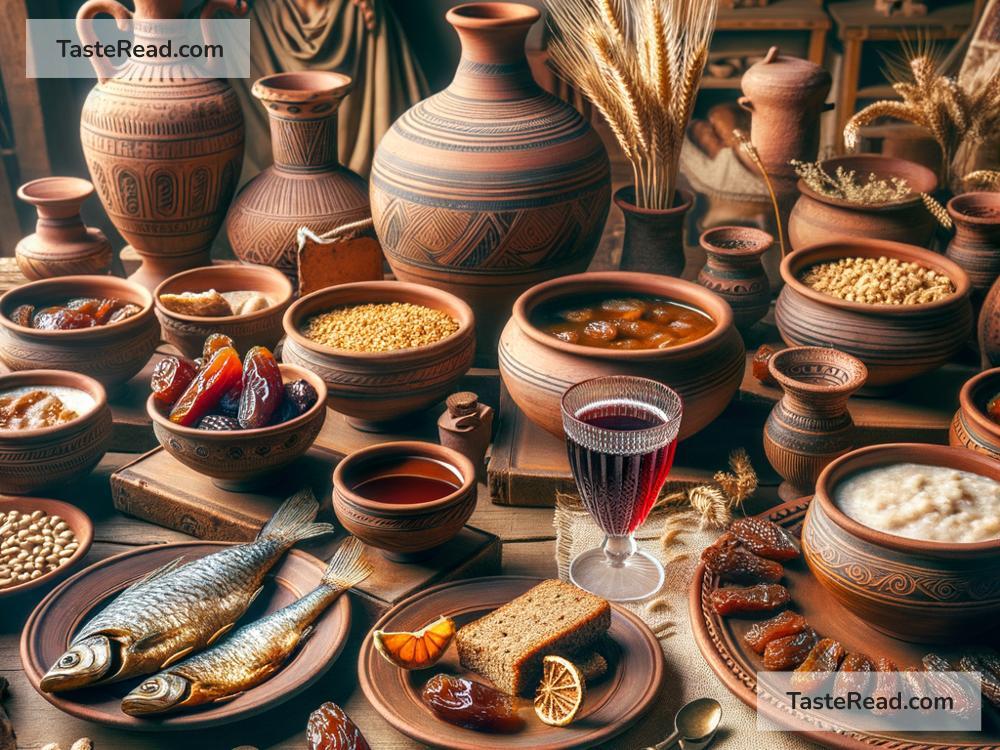The Culinary Traditions of Ancient Rome
When we think about ancient Rome, images of grand emperors, epic battles, and impressive architecture often come to mind. However, life in ancient Rome wasn’t just about marble buildings and the grandeur of the Coliseum—it was also about sharing meals, exploring flavors, and creating culinary traditions that still influence cooking today. Food played a significant role in Roman culture, and their approach to dining was both practical and celebratory. Let’s dive into the fascinating culinary traditions of ancient Rome.
What Did Ancient Romans Eat?
The Roman diet was largely based on what was available locally and what could be preserved and transported. Romans didn’t have refrigerators, so much of their food was fresh, seasonal, or preserved using techniques like drying, salting, or fermenting.
For everyday meals, the staples included grains, vegetables, legumes, fruits, nuts, and olive oil. Bread was a key food item and a daily essential for most Romans. Grains, such as wheat and barley, were ground into flour to create flatbreads or porridge called puls, which was a thick, soup-like dish often flavored with herbs and vegetables.
Meat wasn’t as common for the average Roman, especially for the lower classes. Poorer citizens primarily ate fish or small portions of salted pork when they could afford it. Wealthier households, on the other hand, enjoyed a wider variety of meats, including beef, lamb, poultry, and game like wild boar or rabbit. They even dined on exotic items such as dormice, which were considered a delicacy. Seafood, especially oysters, was highly prized for those who could afford it.
A Love for Vegetables and Fruits
Romans knew the importance of eating vegetables and fruits, and their markets were brimming with fresh produce. Popular vegetables during Roman times included cabbage, leeks, onions, garlic, turnips, lentils, and chickpeas. These could be eaten raw, boiled, or roasted.
Fruits were enjoyed fresh, dried, or preserved. Apples, pears, figs, cherries, plums, and grapes were common. Grapes were especially significant because they were used to make wine—an essential component of Roman meals.
Seasoning and Flavor
The ancient Romans were very imaginative when it came to flavoring their food. Spices, herbs, and sauces turned simple dishes into bursts of flavor. Romans used salt, pepper, cumin, coriander, fennel, and oregano regularly in their cooking. Honey, which was their primary sweetener, added flavor to desserts and sauces.
One unique staple of Roman cooking was garum, a fermented fish sauce. Garum was made by allowing fish guts and salt to ferment for several weeks. The sauce was rich, salty, and savory, and it was used liberally to flavor dishes. Ancient Romans loved garum so much that it was exported across the empire.
How Did Romans Dine?
Dining in ancient Rome wasn’t just about eating—it was about socializing. Meals, especially dinner (cena), were often a communal event. Wealthy Romans held elaborate feasts that could last for hours. Guests reclined on couches around a table, enjoying multiple courses while discussing politics, philosophy, and art. These meals served as an opportunity for bonding and showing off status.
For the lower classes, meals were simpler and usually eaten sitting down. Most Romans cooked their food at home, but urban dwellers often relied on thermopolia, which were street-side food establishments that sold ready-made food. These places were convenient for people who didn’t have the equipment or space to cook at home.
Roman Meal Structure
Roman meals typically had three parts:
1. Gustatio (Appetizer): Served at the beginning of the meal, the gustatio included light dishes like eggs, olives, or small fish paired with wine or mulsum (wine mixed with honey).
-
Prima Mensa (Main Course): This was the heart of the meal, featuring hearty dishes made of meats, vegetables, grains, or seafood, often seasoned with garum.
-
Secunda Mensa (Dessert): The meal ended with sweet treats like fruits, nuts, pastries, or dishes flavored with honey.
For poorer Romans, meals were simpler and usually consisted of porridge, bread, and seasonal vegetables.
Wine—The Drink of Choice
Wine was more than just a drink in ancient Rome—it was an essential part of daily life. Romans drank wine with every meal, but it was typically mixed with water to dilute its strength. The wealthy had access to high-quality wines, while cheaper wines were available to lower classes. Romans also flavored their wine with spices, herbs, or even honey to enhance its taste.
Legacy of Roman Food Traditions
The culinary traditions of ancient Rome left a lasting impact on the world. Their focus on ingredients like olive oil, herbs, bread, and wine continues to shape Mediterranean cuisine today. Many Roman recipes influenced Italian cooking. Dishes like rustic bread, herbed sauces, and pasta reflect Roman creativity with grains and seasonings.
Moreover, Roman dining traditions—where meals brought people together—mirror how people enjoy food today. Whether it’s a simple family dinner or an extravagant feast, food continues to be a way to connect with others, just as it was in ancient Rome.
Ancient Roman culinary practices remind us that food is not just about survival; it’s about sharing, experimenting, and cherishing the flavors of life. Their love of fresh ingredients, bold seasonings, and communal dining offers timeless lessons for modern cooks and gourmands. So next time you sit down for a meal, think of the ancient Romans reclining on their couches, savoring their grains, garum, and wine under the Mediterranean sun. Wouldn’t it be fun to try a Roman-inspired feast someday?


